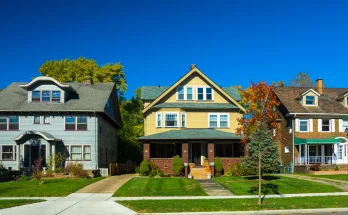Condominium assessment increases represent an inevitable reality many prospective buyers overlook when evaluating monthly ownership costs. While marketing materials like the Skye At Holland Brochure might emphasise current fee structures and amenities, these assessments rarely remain static throughout your ownership period. Understanding the factors driving assessment increases helps buyers budget realistically for long-term ownership expenses while evaluating whether specific communities demonstrate financial patterns suggesting potential steep increases in future years.
Reserve funding requirements
Adequate reserve funding represents one of the most significant drivers of assessment increases, particularly in ageing communities where major components approach replacement age. Professional reserve studies recommend specific funding levels based on anticipated repair and replacement schedules, often requiring progressive increases to meet future obligations responsibly. Communities with historically low assessments frequently face steeper increases when updated reserve studies reveal substantial underfunding.
Associations transitioning from developer control to homeowner governance often discover that initially attractive assessment levels developers establish are insufficient for long-term maintenance needs. These artificially low initial assessments create market appeal during sales but necessitate correction once owner-controlled boards assume financial responsibility for long-term building health. This correction period typically occurs three to five years after development completion, creating predictable assessment increases beyond regular inflation adjustments.
Insurance premium volatility
Insurance represents a substantial budget component for most associations, with premiums subject to factors beyond community control, including weather patterns, regional claim history, and insurance market cycles. These external factors can drive double-digit percentage increases in coverage costs without corresponding coverage improvements, necessitating assessment adjustments to maintain adequate protection. Consider these insurance-related factors driving assessment increases:
- Regional catastrophic events affecting carrier risk models
- Building-specific claim history impacting future premiums
- Carrier withdrawal from specific markets reduces competition
- Regulatory changes requiring expanded coverage mandates
- Increased property replacement costs requiring higher coverage limits
These insurance market dynamics often create sudden assessment pressures as premiums represent non-discretionary expenses that associations cannot simply defer or reduce without exposing owners to unacceptable financial risks. Communities in coastal or disaster-prone regions face high vulnerability to insurance-driven assessment increases.
Utility cost escalation
Utilities represent substantial budget components for communities with extensive common areas or included services. Water, electricity, gas, and waste removal costs typically rise faster than general inflation, creating consistent upward pressure on assessments. Buildings with central systems or shared utilities face particular exposure to these increases as consumption costs appear in association budgets rather than individual unit bills. Examine these utility-related drivers of assessment increases:
- Infrastructure ageing is increasing water usage through leaks
- Rate structure changes by municipal providers
- Rising fees for waste removal and recycling services
- Increased common area electricity costs
- Heating fuel price volatility in cold-weather markets
These utility factors create challenges for older buildings with less efficient systems and infrastructure that may waste resources through outdated technologies or deteriorated distribution systems. Energy efficiency improvements can help mitigate these increases, but typically require initial capital investments through special assessments or reserve fund allocations.
Communities transitioning from their first decade to the second decade typically experience noticeable maintenance cost increases as original components begin showing age-related issues. These increases accelerate further during the third decade as major systems reach replacement age, often requiring substantial assessment adjustments beyond inflation to address accumulated deterioration. This ageing pattern affects all buildings regardless of quality, though premium construction may extend useful life somewhat compared to builder-grade installations.




